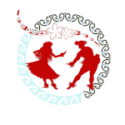In Tahitian dance (‘Ori Tahiti), Nu’u te’i is a particular movement that incorporates both an upward and controlled elevation of the body, combined with a sharp, specific placement of the torso or hips. The term Nu’u means “to rise” or “to elevate,” while te’i typically refers to “a firm position” or “to anchor” something in place, often involving a controlled stance or motion that contrasts with flowing or continuous movements. Together, Nu’u te’i refers to an elevating movement where the dancer rises with intention and then holds or anchors the body in a firm, grounded position.
Understanding Nu’u Te’i in Tahitian Dance
- Translation:
- Nu’u means “to rise” or “to elevate,” which is the upward motion involved in the movement.
- Te’i means “to anchor” or “to hold firmly,” suggesting that the movement involves a rise followed by a controlled or grounded position.
- Together, Nu’u te’i signifies a rise or elevation followed by the establishment of a firm, grounded position, where the dancer’s body, particularly the torso or hips, becomes firmly planted after the upward movement.
Technique of Nu’u Te’i
- Movement Characteristics:
- The movement begins with the dancer rising from a lower, more grounded position, often involving a smooth upward motion.
- After the rise, there is a sharp, controlled shift to a firm position—often the torso or hips lock into a solid, centered stance.
- The rise and firm anchoring of the body are typically synchronized with specific arm movements, where the arms might extend or move in a set direction to emphasize the controlled nature of the pose.
- The hips generally continue with their rhythmic motion (such as fa’ahe’e or tā’iri tāmau), providing a connection between the grounded lower body and the upper body’s firm position.
Role in Tahitian Dance
- Grace and Control:
- Nu’u te’i introduces an element of both fluidity and control to the dance. The rising motion creates a sense of elevation, while the firm anchoring at the peak of the rise provides a moment of stillness and strength.
- Symbolic of Stability and Strength:
- The movement can symbolize both spiritual or emotional growth (through the rise) and the establishment of stability or grounding (through the firm position). This could be interpreted as a balancing of elevation with groundedness or the connection between the earth and the sky.
- Transitions and Emphasis:
- The controlled anchoring of the body after the rise can act as a transition within the dance, providing emphasis to a moment in the choreography or a thematic shift within the performance.
Training and Mastery
- Core Strength and Balance:
- Mastering Nu’u te’i requires a dancer to have excellent core strength and balance, as the movement involves not only the ability to rise but also the stability required to anchor the body firmly in a controlled stance.
- Upper Body Control:
- The arms and torso must maintain fluidity while also anchoring firmly, requiring precise control. This allows the dancer to create a visual moment of elevation followed by stillness.
- Lower Body Coordination:
- The hips and legs, which typically provide the rhythm and foundation in Tahitian dance, must remain active and synchronized with the rise and firm stance of the torso and upper body.
Symbolism and Connection
- Natural and Spiritual Themes:
- Nu’u te’i can symbolize the harmony between rising (growth, ascension) and stability (grounding, connection to the earth). The movement can evoke themes of spiritual ascension, personal development, and emotional grounding.
- The rise and subsequent anchoring might also represent a character’s internal struggle or journey of self-discovery, where they ascend emotionally or spiritually only to become firmly grounded once they reach their peak.
- Cultural Meaning:
- This movement reflects the cultural value placed on both fluidity and groundedness in Tahitian dance, representing a balance between movement and stillness, growth and stability.
Examples of Usage in Dance Styles
- In ‘Ōte’a (Fast-Paced Dance):
- Although ‘Ōte’a dances are generally fast-paced and energetic, Nu’u te’i can be used during slower sections to create dramatic emphasis, marking a shift in energy or rhythm within the performance. It adds a sense of contrast and heightens the visual dynamics of the piece.
- In ‘Aparima (Storytelling Dance):
- In a storytelling dance, Nu’u te’i could be used to symbolize a significant moment of emotional or spiritual growth, where the dancer rises to new heights of understanding or enlightenment before settling into a firm and grounded position.
Examples of Usage
- In Group Performances:
- Nu’u te’i can be used in synchronized group choreography to create a visual moment of unity, where all the dancers rise and then anchor into a firm stance together. This could symbolize collective strength or shared purpose.
- In Solo Performances:
- In solo performances, Nu’u te’i can highlight the dancer’s personal journey, with the rise symbolizing growth or aspiration, and the firm anchoring reflecting their inner strength or realization.
Symbolism and Cultural Relevance
- Elevation and Grounding:
- The movement mirrors the relationship between the earth (the grounding) and the sky or spiritual elevation, themes deeply connected to Tahitian culture, where the physical and spiritual realms are often intertwined.
- Personal Growth:
- The rise followed by anchoring may also represent personal growth followed by finding a stable, rooted identity or sense of peace after growth or transformation.
